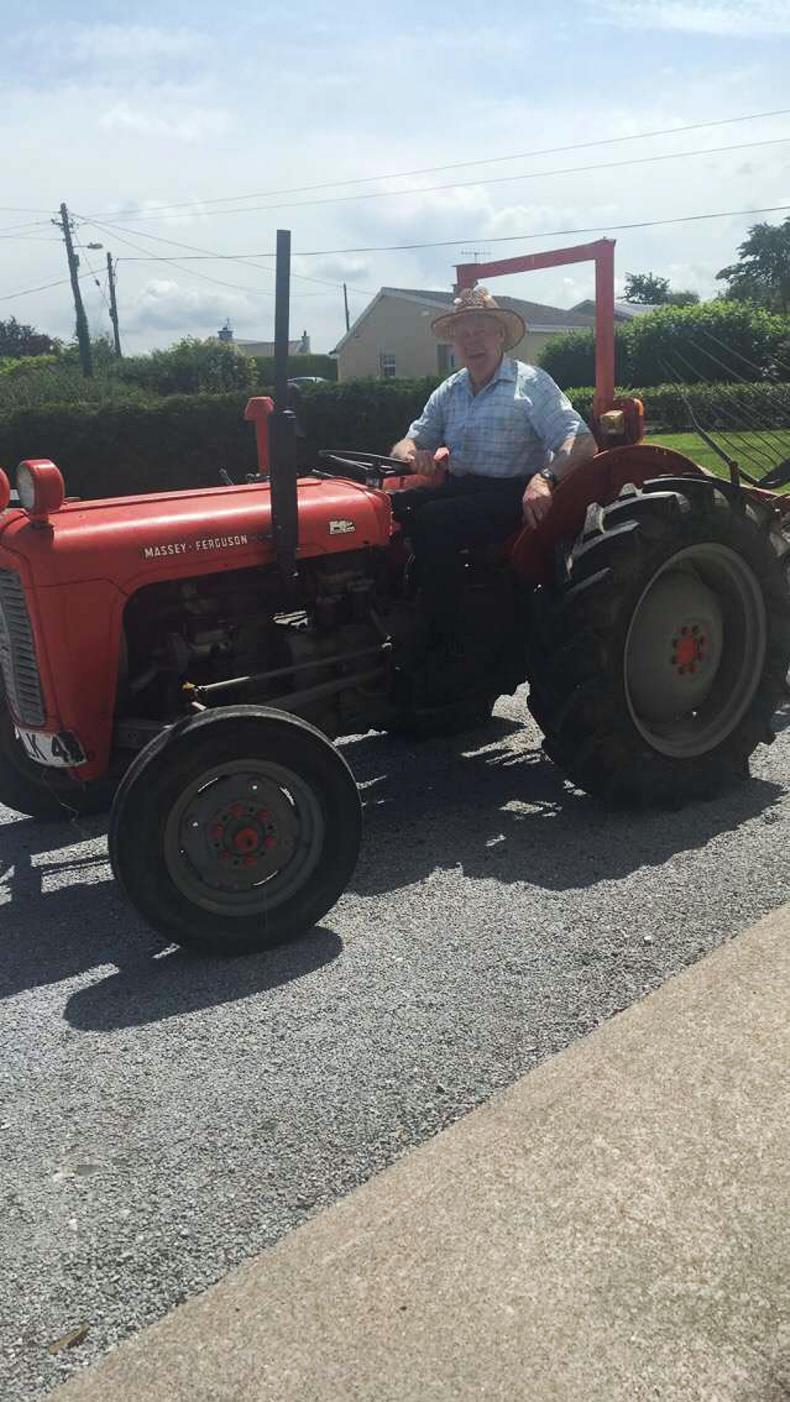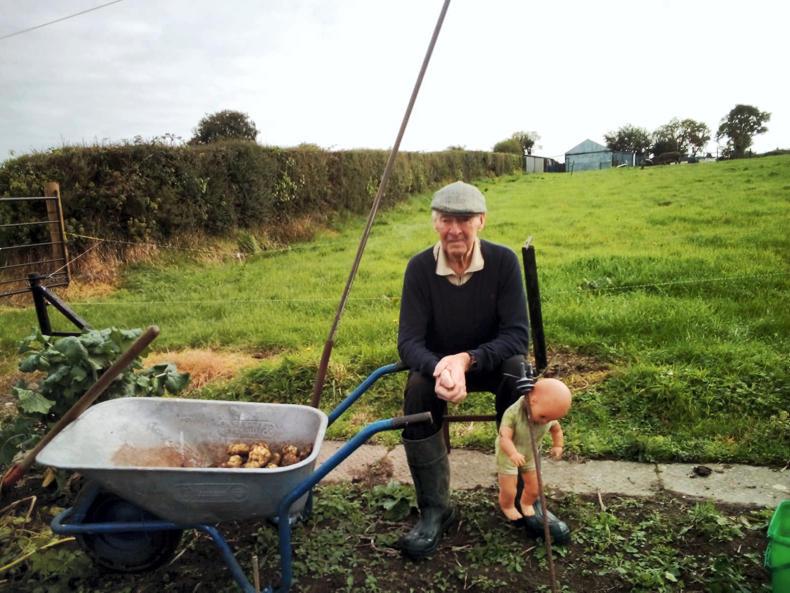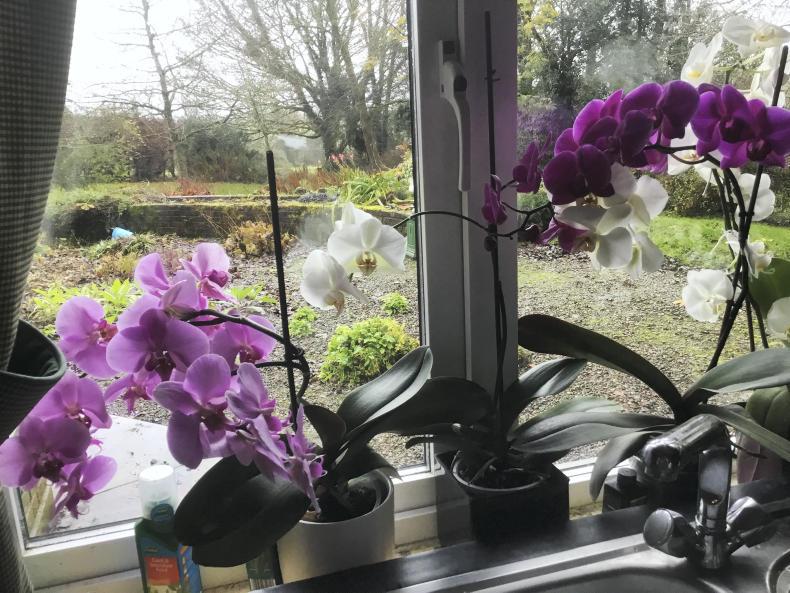Happy new year to everyone and may your gardens blossom and bloom all through 2020. This time of year can be a bit of a glummer with very little colour in the garden.
But you have it all to look forward to and even now our climbing roses and clematis are putting out new growth.
We were blessed with fine weather all through Christmas and there wasn’t a day when I didn’t spend time in the garden. One big job I had to finish was to clear the back of an old box hedge. It was smothered in briars and scrub and lots of deadwood.
It gave me great satisfaction to clear the length of it. And what’s more it even looks good with lots of ferns and moss taking centre stage.
I spent the rest of my time clearing around the clumps of snowdrops that are just about ready to spring into life. I can’t wait for the nicest four weeks of my gardening year.
My top five gardening must haves
Apart from a bit of ground, it really costs very little to get started in a garden. So here are my top five gardening aides:
1 I never go to the garden without a secateurs. It’s essential. There’s always something that needs a trim or to be cut back and the time to do that job is when you see it. Buy a decent secateurs, one with a bit of power to it. You don’t want it to get stuck clipping something that’s only pencil thick. Also buy one with brightly coloured handles, this makes them much easier to find when you misplace them.
2 My next bit of essential gardening kit is a daisy grubber. This is a lifesaver and you will never get rid of weeds without one. It’s a little handheld tool with a wooden handle and a length of metal that’s split at the top. It is a humdinger at dealing with the roots of dandelions, creeping buttercup and ground elder to mention but a few. It’s able to get around the stem/root of a weed and with a bit of jiggling take away the tap roots without damaging the plant they are attempting to smother. You need a good strong grubber, not one that will buckle under pressure.
3 In the past I found it hard to get good gardening gloves where I could feel what I was doing so I’d end up wearing no gloves at all. Then I discovered Showa gloves. These are lightweight plastic gloves that fit like a second skin. They are machine washable and last for ages. I put them to good use clearing the ditch and never got as much as a scratch despite handling hundreds of bits of briar.
4 A few years ago I got a present of a kneeling pad and now I wouldn’t be without it. No more wet knees and trousers. It helps protect my back as I’m not bent over. And it gives me great comfort when working on gravel or stone. It’s a rectangle of foam covered in plastic, so easy to make for those of you who are handy with the sewing machine.
5 Other useful items include a short-handled spade and fork. The shorter handles suit me as they are not so heavy and I find them easy to work with. A comfortable fleece and a decent pair of boots that will keep your feet warm and dry are worth the investment. I have a pair of Ecco boots that I bought 16 years ago and they still do the job perfectly. Finally if perennial (long lasting) plants are your thing then invest in one good gardening book. I would recommend Perennial Garden Plants by Graham Stuart Thomas. It has everything you want to know. After that there’s always Google.
Our very good neighbour and friend John Wall passed away on New Year’s Day. He had just turned 85 and had been a gardener all his life. That was recognised at his funeral mass when among the gifts brought to the altar were his own home grown carrots and spuds.
John lived in the townland of Clashganniff in the same house he’d grown up in as a child. The house came with an acre of ground and what a productive acre it was. John prided himself on the quality of his spuds. He grew Irene’s and Kerr’s Pink’s and even if the weather wasn’t ready he always had the ground ready for planting on St Patrick’s Day.

John Wall.
He sprayed the spuds with a bluestone and washing soda mix that people swore by. The recipe was 20 gallons of water in a barrel to which was added 5lb of washing soda and 4lb of bluestone. A kettle of boiling water to dissolve the washing soda ensured the crystals didn’t block the nozzle of the sprayer.
He grew Greyhound cabbage from seed under cover of glass, so he always had good strong plants to sow on. 
John Wall.
His crops of kale, turnips, parsnips, carrots, Brussels sprouts and onions fed not alone his own family, but his neighbours as well.
John grew great clumps of rhubarb and was known to carry sticks of it to cards to give to people fond of a homemade rhubarb tart.
Like the arrival of the swallows, you knew summer was here when you met John Wall coming against you on his 53-year-old Ferguson 35 with the hay turner behind.

John Wall.
He’d be off to turn or rank hay for a neighbour. It’s hard to believe we won’t see his cheery face and warm salute as he makes his way to save yet another meadow. Condolences to Mai and family and may he rest in peace.
section>Time to...
Give some TLC to that orchid you got for Christmas. In recent years orchids have become very popular as house plants. You see them shivering in supermarket lobbies and by the time they arrive into someone’s home they are past their best. Before you know it the waxy blossoms have fallen off and you are left with a few scraggy twigs.

Orchid rejuvenated.
But don’t despair, with regular watering and feeding they will bloom again and again and for up to six months at a time.
Take time to walk around the garden and make a list of jobs that need doing. Far easier to do that now that everything is pared back. Be sure to take photos throughout the seasons so as to help you remember where everything is.
Read more
The Garden Diaries: there's a chill in the air
Chancing my luck with echiums
Happy new year to everyone and may your gardens blossom and bloom all through 2020. This time of year can be a bit of a glummer with very little colour in the garden.
But you have it all to look forward to and even now our climbing roses and clematis are putting out new growth.
We were blessed with fine weather all through Christmas and there wasn’t a day when I didn’t spend time in the garden. One big job I had to finish was to clear the back of an old box hedge. It was smothered in briars and scrub and lots of deadwood.
It gave me great satisfaction to clear the length of it. And what’s more it even looks good with lots of ferns and moss taking centre stage.
I spent the rest of my time clearing around the clumps of snowdrops that are just about ready to spring into life. I can’t wait for the nicest four weeks of my gardening year.
My top five gardening must haves
Apart from a bit of ground, it really costs very little to get started in a garden. So here are my top five gardening aides:
1 I never go to the garden without a secateurs. It’s essential. There’s always something that needs a trim or to be cut back and the time to do that job is when you see it. Buy a decent secateurs, one with a bit of power to it. You don’t want it to get stuck clipping something that’s only pencil thick. Also buy one with brightly coloured handles, this makes them much easier to find when you misplace them.
2 My next bit of essential gardening kit is a daisy grubber. This is a lifesaver and you will never get rid of weeds without one. It’s a little handheld tool with a wooden handle and a length of metal that’s split at the top. It is a humdinger at dealing with the roots of dandelions, creeping buttercup and ground elder to mention but a few. It’s able to get around the stem/root of a weed and with a bit of jiggling take away the tap roots without damaging the plant they are attempting to smother. You need a good strong grubber, not one that will buckle under pressure.
3 In the past I found it hard to get good gardening gloves where I could feel what I was doing so I’d end up wearing no gloves at all. Then I discovered Showa gloves. These are lightweight plastic gloves that fit like a second skin. They are machine washable and last for ages. I put them to good use clearing the ditch and never got as much as a scratch despite handling hundreds of bits of briar.
4 A few years ago I got a present of a kneeling pad and now I wouldn’t be without it. No more wet knees and trousers. It helps protect my back as I’m not bent over. And it gives me great comfort when working on gravel or stone. It’s a rectangle of foam covered in plastic, so easy to make for those of you who are handy with the sewing machine.
5 Other useful items include a short-handled spade and fork. The shorter handles suit me as they are not so heavy and I find them easy to work with. A comfortable fleece and a decent pair of boots that will keep your feet warm and dry are worth the investment. I have a pair of Ecco boots that I bought 16 years ago and they still do the job perfectly. Finally if perennial (long lasting) plants are your thing then invest in one good gardening book. I would recommend Perennial Garden Plants by Graham Stuart Thomas. It has everything you want to know. After that there’s always Google.
Our very good neighbour and friend John Wall passed away on New Year’s Day. He had just turned 85 and had been a gardener all his life. That was recognised at his funeral mass when among the gifts brought to the altar were his own home grown carrots and spuds.
John lived in the townland of Clashganniff in the same house he’d grown up in as a child. The house came with an acre of ground and what a productive acre it was. John prided himself on the quality of his spuds. He grew Irene’s and Kerr’s Pink’s and even if the weather wasn’t ready he always had the ground ready for planting on St Patrick’s Day.

John Wall.
He sprayed the spuds with a bluestone and washing soda mix that people swore by. The recipe was 20 gallons of water in a barrel to which was added 5lb of washing soda and 4lb of bluestone. A kettle of boiling water to dissolve the washing soda ensured the crystals didn’t block the nozzle of the sprayer.
He grew Greyhound cabbage from seed under cover of glass, so he always had good strong plants to sow on. 
John Wall.
His crops of kale, turnips, parsnips, carrots, Brussels sprouts and onions fed not alone his own family, but his neighbours as well.
John grew great clumps of rhubarb and was known to carry sticks of it to cards to give to people fond of a homemade rhubarb tart.
Like the arrival of the swallows, you knew summer was here when you met John Wall coming against you on his 53-year-old Ferguson 35 with the hay turner behind.

John Wall.
He’d be off to turn or rank hay for a neighbour. It’s hard to believe we won’t see his cheery face and warm salute as he makes his way to save yet another meadow. Condolences to Mai and family and may he rest in peace.
section>Time to...
Give some TLC to that orchid you got for Christmas. In recent years orchids have become very popular as house plants. You see them shivering in supermarket lobbies and by the time they arrive into someone’s home they are past their best. Before you know it the waxy blossoms have fallen off and you are left with a few scraggy twigs.

Orchid rejuvenated.
But don’t despair, with regular watering and feeding they will bloom again and again and for up to six months at a time.
Take time to walk around the garden and make a list of jobs that need doing. Far easier to do that now that everything is pared back. Be sure to take photos throughout the seasons so as to help you remember where everything is.
Read more
The Garden Diaries: there's a chill in the air
Chancing my luck with echiums










 This is a subscriber-only article
This is a subscriber-only article










SHARING OPTIONS: